Shipwreck CLIO
-
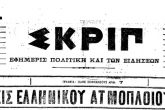
Newspaper report of the shipwreck Clio -
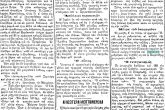
Newspaper report of the shipwreck Clio -
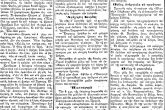
Newspaper report of the shipwreck Clio -

Newspaper report of the shipwreck Clio -
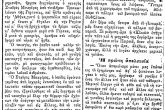
Newspaper report of the shipwreck Clio -

Newspaper report of the shipwreck Clio -
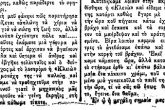
Newspaper report of the shipwreck Clio -
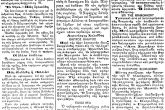
Newspaper report of the shipwreck Clio -
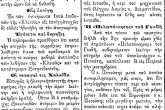
Newspaper report of the shipwreck Clio -
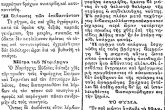
Newspaper report of the shipwreck Clio -

Newspaper report of the shipwreck Clio -

Newspaper report of the shipwreck Clio -

Inside the funnel -

Divers over the funnel -

The stairway of the ship -

The steam boiler of the ship -

The steam boiler of the ship -
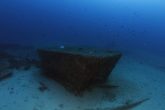
The ship's tank -

Debris -

“Clio” was added to the fleet of the Greek maritime company “Elliniki Atmoploia McDοwall and Barbour” in 1899. It was constructed in 1870 at Blackwood & Gordon shipyard at Port Glasgow of Britain at platform 98 with construction number 105. It had a two-cylinder 120 BHP engine constructed by the shipyard’s repair shop and its launching was realized on Thursday 28/07/1870.
The first name of the ship was “Southwestern” and it was launched on 28 July 1870 with a British flag for the Ardrossan Steam Navigation Company. In 1883, it was sold to Gustaf Gollcher whose head office was in Malta and he changed the ship’s name to “La Valette”. In 1890, the ship was sold to John McCallum whose head office was in Glasgow and he changed the name to “Quiraing”. In 1896, the Irish Company “David Rowan Jr & Walter Bain” bought the ship and changed its name to “Merrick”, but in 1899, Alexander Wylie bought it and sold it to the Greek maritime company “Elliniki Atmoploia McDowall and Barbour” that gave its last name with which it is known until today. This iron ship had a length of 58, 1 meters, a width of 8 meters and its net registered tonnage was 156. “Clio” was one of the fastest ships of all with a speed that could reach 12 knots. During its first years of functioning, “Clio” made the route Piraeus – Crete. In 1901, during one of its routes coming from Crete through Serifos and having 60 passengers and cargo, the ship crashed into a reef near Patroklos, causing great damage to ship’s bottom. The captain had to lead the ship at Patroklos coast. Despite the panic that followed, the steam ship “Chios” of the company “Nea Elliniki Aktoploia” coming from Volos port, collected the passengers, leaving no victims. A few days later, John with its crew made a quick repair to the ship and towed it to Piraeus, where it was properly fixed in order to function again. During its last years, the ship made routes from central and north Greece to Piraeus and the other way round. During one of these trips, “Clio” would meet its destiny.
Clio” meets its destiny.
On 6 January 1904, the ship crashed into the island of Dipsa carrying 97 passengers, including the crew members. The news concerning the accident that was spread by the newspaper “Script” the next day of the wreck contains a lot of inaccuracies. It is necessary to mention the exact words that were used by the newspaper: “John’s “Clio” sank near Oropos. A terrible sinking was referred yesterday to the Greek Ministry of Maritime Affairs by phone, at 20.30, by the responsible of Oropos Coast Guard. The ship, coming from Chalkida to Piraeus and approaching Oropos, crashed into the rocky coast of the island of Stouronisi. The ship’s front part of the bottom cracked and there was a water inflow that eventually filled the whole bottom. The total number of passengers and crew members was 94 people. The majority of the passengers boarded at Volos and Stylida and during the accident most of them were sleeping. However, they got up because of the crash and reached the deck of the ship starting yelling for help. Thanks to crew’s composure, nobody was drown. Passengers stayed calm until they all boarded the lifeboats and reached Oropos safe and sound. The ship sank, although the crack was not wide and the water inflow was slow.
Warship mission As soon as the ministry was notified about the accident, they informed the minister S. Koumoundouros who immediately asked more information. In the meanwhile, the responsible of Oropos Coast Guard had already reported that all the passengers were safe at Oropos, waiting for help though under the rain and the cold. The minister ordered by phone the steamships Pinios and Evrotas to sail towards Oropos and help the passengers and at 2.00 they both left Piraeus. No other details are known because the phone call was cut and John’s agency did not know anything.” The ship’s sinking“Clio” started from Piraeus port, on Monday 5 January 1904, to Volos, doing stops at Lavrio, Chalkida, Evoia Lake and Stylida. It firstly made an embarkation stop at Lavrio and after Tuesday midnight it was travelling with a speed of 11,5 miles to Chalkida. Under unknown circumstances that it is not easy to clear because the information by the newspapers of those times was vague, the ship lost its direction and crashed into the island of Dipsa.
There are two possibilities. The first one says that the lieutenant Argyris Pappas, who drove the ship from Lavrio, fell asleep and as a result he lost the direction. The second version says that, due to the existence of many metal objects at ship’s bridge, the compass did not work with the proper accuracy. The first version is the most possible not only because there are much more reports that mention it but also because, at those years, the competition at maritime field made the crews to travel a lot without having the time to rest. So, the result was sure… “Clio” lays seriously hurt on Dipsa’s rocks and its sinking is a matter of time. The captain tried to jam the ship on the rocky islet, but the engine did not let him do it. So, as he could not manage to avoid the sinking, he tried to tie the bow on the islet and then he turned the ship along the islet in order for the passengers to be able to disembark. Most of the passengers were sleeping when the crash happened, so it is logic that panic dominated. Many of them jumped into the sea and then swam towards the islet. Among these people, Vassilis Kourousopoulos, one of the first class passengers, was the only victim because he was killed by the ship that threw him on the rocks. This fact means that composure would be really difficult to dominate, despite the things that the newspapers said. The captain ordered the sailors to create an artificial bridge between the ship and islet so that the passengers and the crew would abandon the ship safely. Two hours after the crash, “Clio” started to sink and articles mention that during its sinking the whistle that was on the funnel was ringing until it was lost in Evoikos waters. Trying to explain the exact situation that was going on during the sinking of the ship, I modified with an image processor a picture of the painter Ken Howard who depicted the sinking of another ship and I think that this is what happened on Dipsa that night.
Clio
Year: 1870
Name: South Western Keel
Type: Passenger/cargo Launch Date: 28.7.70
Flag: GBR Date of completion:
Tons: 481 Link: 1596
DWT: Yard No: 105
Length overall: Ship Design
LPP: 58.1 Country of Build: GBR
Beam: 8.0 Builder: Blackwood & Gordon
Material of build: I Location of Yard: Port Glasgow
Subsequent History: 83 La Valette – 90 Quiraing – 97 Merrick – 99 Clio
Disposal Data: wrecked Egripo Channel 19.1.04 (Piraeus – Volos, general)
Name Tons Change Registered Owner
South Western 481 1870 R. Henderson & Co GBR Ardrossan
South Western 481 1876 Ardrossan Sg Co GBR Ardrossan
La Valette 481 1883 Gustaf Gollcher GBR Valletta
Quiraing 481 1890 J.McAllum & Co GBR Glasgow
Merrick 481 1897 Ayr Steam Sg & Co GBR Glasgow
Clio 481 1899 McDowall & Barbour GRC Piraeus
It was constructed at Blackwood and Gordon at Port Glasgow of Scotland in 1870 under the name South Western. Firstly, it was owned by the small company of Henderson and it was a passenger and a cargo ship that was making routes at West Scotland, mainly at the small town Ardrossan that was and still is the communication centre with the islands at the west of Scotland. The ship had 481 tons, a length of 58,1 meters and a width of 8 meters. In 1876, it was owned by the company Ardrossan Steamship Shipping Co. in 1883, it was transferred to Malta and it was named La Vallette. Then, its owner was Gustaf Gollcher and his company. Gollcher was from England and had a company that made a lot of journeys to Malta, Gozo and some other small ports, but sometimes they reached Italy or Alexandria. In 1890, the ship returned to Scotland and travelled under the name Quiraing with J. McAllum & Co and under the name Merrick with Ayr Steamship Shipping Co.
Source: http://www.nautilia.gr/forum/showthread.php?78725-%CA%EB%E5%E9%FE-(%F4%EF%F5-McDowall-amp-Barbour)-Clio-Merrick-La-Valette-South-Western
http://ydronaftes.gr/el/Άρθρα/Ναυάγια/Ναυάγιο_%22Κλειώ%22
The sinking direction is North and minimum depth is 24 meters and the maximum is about 28 meters.

